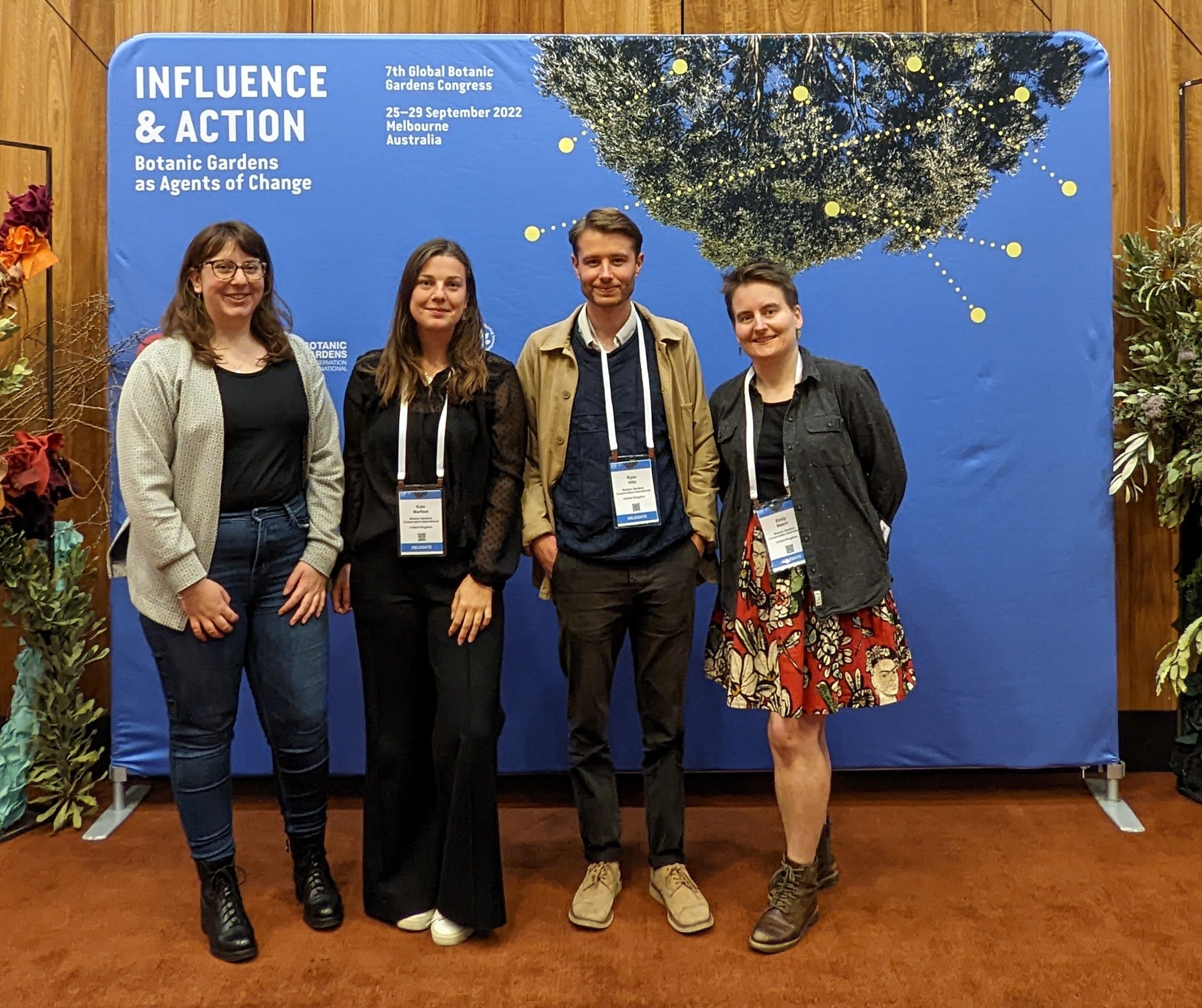Tackling Global Challenges Together
-
Region
Global -
Programme
BGCI -
Workstream
Addressing Global Challenges -
Topic
Services for Botanic Gardens -
Type
Blog -
Source
BGCI
For those of you unable to join us at the 7th Global Botanic Gardens Congress in Melbourne (Australia) last month, you missed a treat! Our theme was ‘Influence and Action: botanic gardens as agents of change’, and the conference covered topics including adapting to climate change; greener and more liveable cities; plant and biodiversity conservation; impactful engagement and education, and; surviving in a post-COVID world. Over 500 delegates from 36 countries enjoyed 10 plenary presentations, 73 oral presentations, 12 symposia, 5 panel discussions, 9 workshops, 10 rapid fire presentations and 46 posters. But the statistics don’t even begin to tell the story. After what must surely be the most planned botanic gardens congress in history (7GBGC was postponed twice due to you know what), we were overwhelmed by the warmth of our hosts and superb organization by the conference managers.
A big thank you to the Royal Botanic Gardens, Victoria, BGANZ and Waldron Smith Management.
Everyone will have their own memories of the week but the main thing I brought home was how pleased everyone was to meet each other in person again. There was much hugging, some questionable singing and some accomplished dancing. Given that we had scientists in our midst – not a community generally known for our people skills – we did pretty well. We also had a number of delegates from outside our sector for whom this was their first Congress, and universal feedback was ‘Wow! That was amazing. Who knew that botanists could be this much fun?’ There were serious outcomes too. Highlights for me were:
- a packed session looking at ways in which we can mainstream, recognise and reward specialist conservation horticulture;
- the launch of the Climate Assessment Tool;
- the launch of two digital plant material exchange platforms (Index Seminum and PlantConnect), and;
- several presentations on how to bring about behavioural change for sustainability and conservation.

Partnerships

The dance floor
Who said that botanists can't dance?

GTA team
The Global Tree Assessment team

Engaging plenaries
Rooms packed full of delegates

Dan Crowley
Dan Crowley presenting the Global Conservation Consortia

Paul Smith's plenary
Paul Smith, BGCI Secretary General

Melbourne, Australia
Venue for the #7GBGC
All of the above and much more is on the positive side on the ledger. Balanced against this, though, is the relentless degradation of the environment, natural capital and biodiversity, for which much evidence was presented at the conference. Delegates to BGCI congresses are, of course, self-selecting; BGCI’s membership largely comprises botanical and forestry organisations already committed to plant conservation, on the track towards sustainability and concerned with equity for all.
The opportunity that a congress like this provides is of course to learn new things but, more importantly perhaps, to re-energise, support each other and use that momentum to bring other organisations and individuals into the fold.
Sometimes the tasks we set ourselves seem to be enormous – and we are all fighting our own mini-battles for funding and leadership support – but together we are a force to be reckoned with!